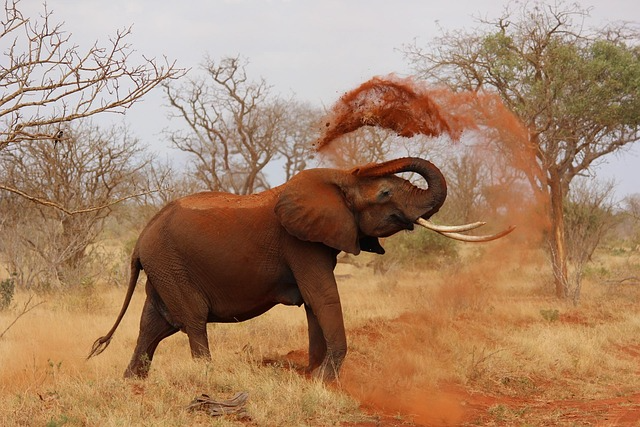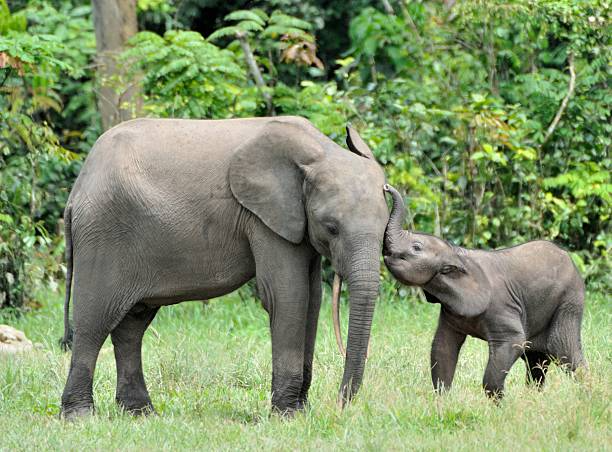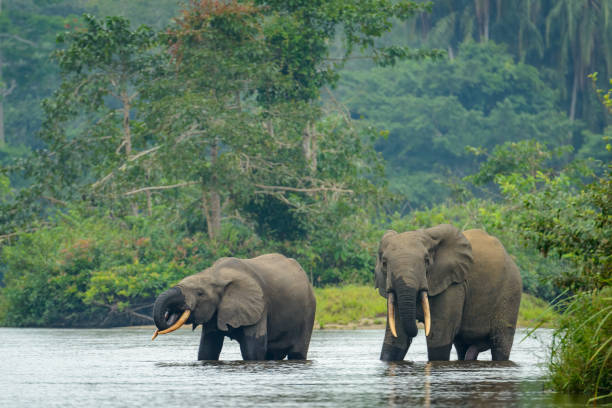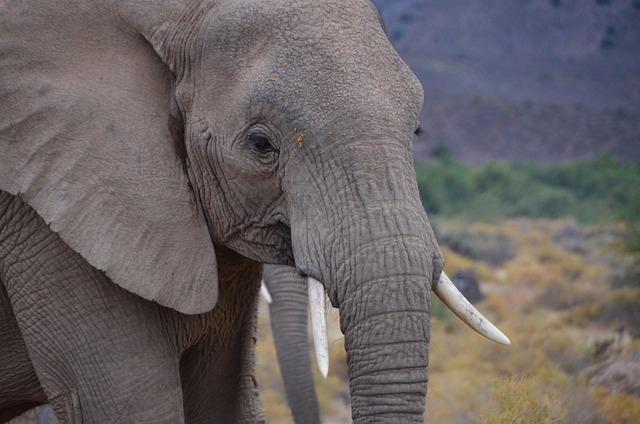Table of Contents
Scientific Classification
| Kingdom | Animalia |
| Phylum | Chordata |
| Class | Mammalia |
| Order | Proboscidea |
| Family | Elephantidae |
| Genus | Loxodonta |
| Species | Loxodonta cyclotis |
| Scientific Name | Loxodonta cyclotis |
Description
The African Forest Elephant (Loxodonta cyclotis) is an intriguing relative of the African Bush Elephant. Although smaller in size, this species plays a crucial role in its ecosystem. It is uniquely adapted to thrive in dense forest environments. Unlike their bush-dwelling counterparts, they possess straighter, downward-curving tusks and rounder ears.
Adult males can reach heights of up to 2.5 meters (8 feet) at the shoulder and weigh between 2,000 to 4,000 kg (4,400 to 8,800 lbs). Females are somewhat smaller but still quite impressive. Their dark, thick skin provides protection against the challenging conditions of the rainforest.

Distribution
Their range includes:
- Gabon
- Republic of Congo
- Democratic Republic of Congo
- Ivory Coast
- Cameroon
- Liberia
Deforestation and human activity are shrinking their range. This forces them into smaller, fragmented territories.
Habitat
Unlike their savanna-dwelling relatives, African Forest Elephants prefer:
- Dense Rainforests – Providing ample food and shelter.
- Swamps and Wetlands – Essential for hydration and mud baths.
- Forest Clearings – Used as social and feeding grounds.
Elephants are vital to their ecosystem. They help spread seeds and keep forests healthy.
Diet
African Forest Elephants are herbivores that eat a wide range of plant materials, such as:
Fruits – A significant component of their diet, which helps in seed dispersal.
Leaves and Bark – Important sources of essential nutrients.
Roots and Tubers – Extracted using their strong trunks.
Grass and Shrubs – Eaten occasionally when they are accessible.
These elephants need a large quantity of food, often consuming more than 100 kg (220 lbs) of vegetation each day.

Behavior
African Forest Elephants show interesting behaviors that highlight their smarts and close friendships:
- Matriarchal Societies – Groups are led by an experienced female.
- Solitary Bulls – Males often roam alone except during mating seasons.
- Communication – Using vocalizations, infrasound, and body language.
- Mud and Dust Bathing – Protecting their skin from parasites and the sun.
- Nocturnal Activity – They are more active at night to avoid human encounters.
Lifespan
In the wild, African Forest Elephants can live for as long as 60 years. However, dangers such as poaching and habitat destruction can significantly shorten their lifespan.
Reproduction and Lifecycle
- Reproduction in African Forest Elephants is a slow and deliberate process:
- Gestation Period – Lasts approximately 22 months, making it one of the longest among mammals.
- Birth – Typically, a single calf is born, weighing about 90 kg (200 lbs).
- Maternal Care – Calves depend on their mothers for several years.
- Weaning – Takes place around 3 to 5 years of age.
- Maturity – Females reach reproductive age at 10 to 12 years, while males achieve independence at 15 to 20 years.

Predators
Due to their size, adult African Forest Elephants have very few natural predators. However, young calves may be vulnerable to:
- Lions – Rare but possible predators.
- Hyenas – Opportunistic attackers of the weak or young.
- Crocodiles – Ambushing elephants at water sources.
- Humans – The greatest threat due to poaching and habitat destruction.
Adaptations
African Forest Elephants have developed several adaptations to thrive in their environment:
- Smaller Size – Enables them to navigate dense forests more easily.
- Straighter Tusks – Useful for moving through thick vegetation.
- Dark Skin – Helps with camouflage in shadowy forests.
- Keen Hearing – Allows communication over long distances.
- Trunk Dexterity – Essential for feeding, drinking, and social interactions.
Conservation Status
The African Forest Elephant is Critically Endangered according to the IUCN. Its population is dropping because of several threats.
Threats:
- Poaching – Driven by illegal ivory and bushmeat trade.
- Habitat Loss – Deforestation due to agriculture and logging.
- Human-Wildlife Conflict – Increasing interactions with rural communities.
- Climate Change – Affecting water sources and vegetation growth.
Conservation Efforts:
- Stronger Anti-Poaching Laws – Enhancing enforcement measures to combat illegal hunting.
- Protected Reserves – Creating national parks and designated conservation areas.
- Community Involvement – Raising awareness among locals about the significance of conservation.
- Scientific Research – Investigating elephant behavior and monitoring population trends.
Conclusion
The African Forest Elephant is a key species. It helps keep its rainforest habitat healthy. As one of the most elusive and least studied elephant species, it faces a severe survival crisis. We must keep conservation efforts strong. This way, these amazing creatures will stay part of our planet’s biodiversity for future generations.



